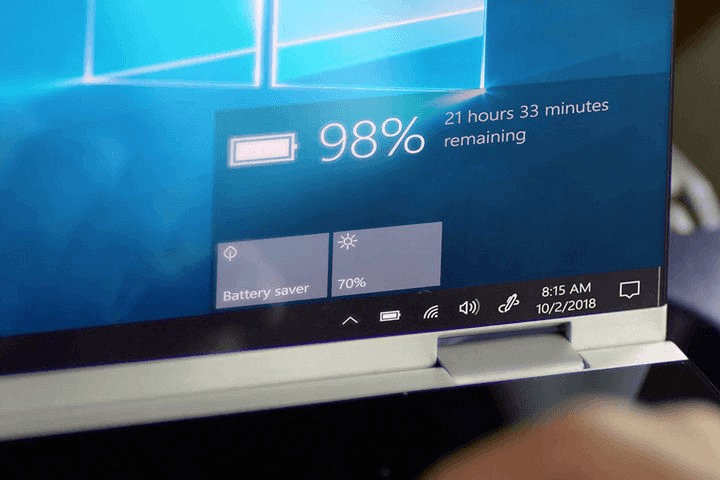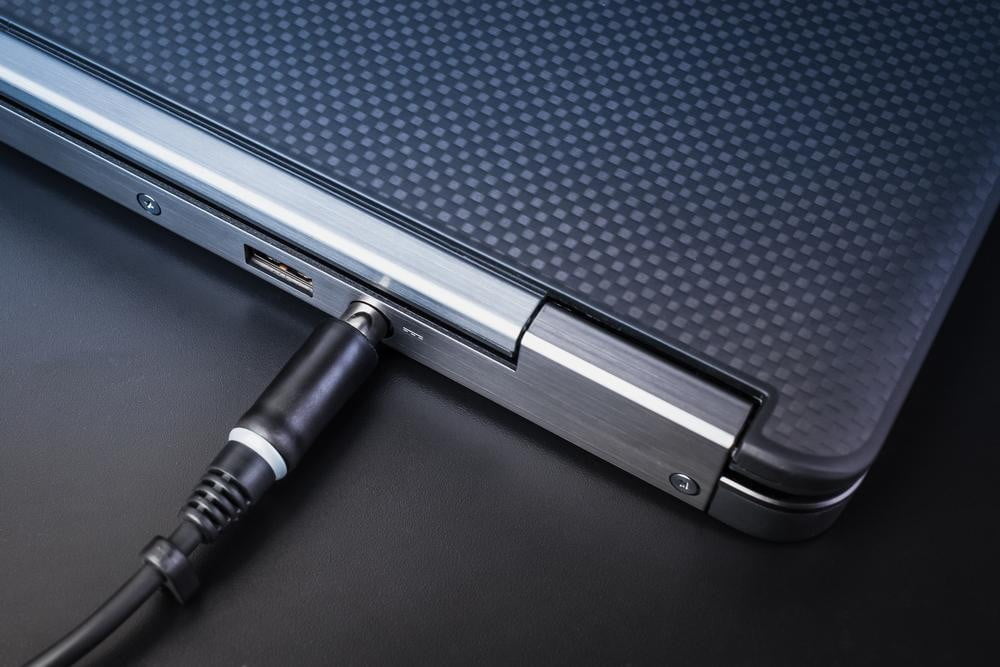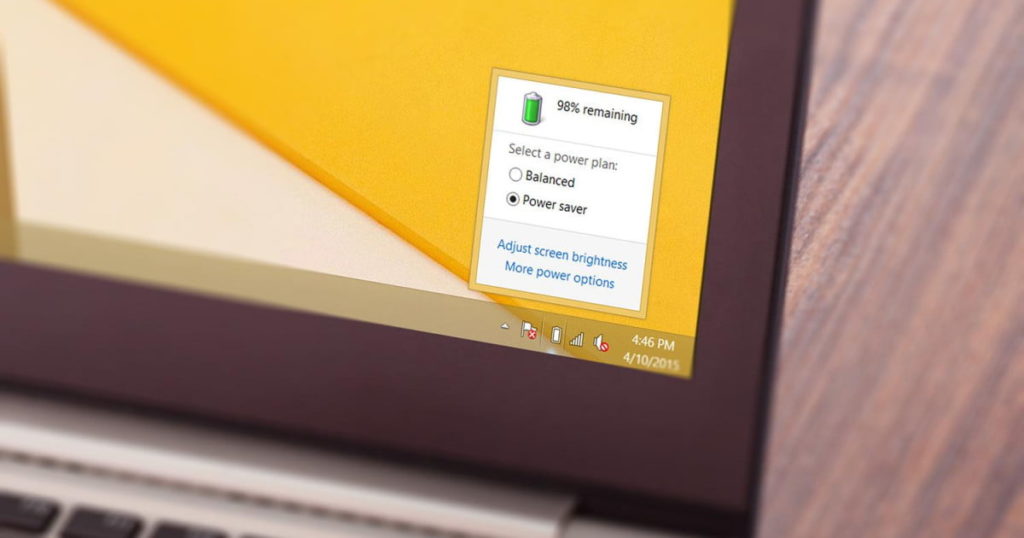How to Care For Your Laptop’s Battery and Extend Its Life
Who doesn’t have a love/hate relationship with their laptop battery? It lets us be mobile, but it also chains us to that little battery life gauge and the dreaded decay of performance as time goes on.
But by following certain best practices, you can move the relationship more firmly toward the “love” side.
Save cycles, save your battery

All laptop batteries are built to handle a certain number of charge cycles, usually somewhere around 500 full cycles — and sometimes even more. Essentially, a charge cycle equals one full discharge down to zero percent and then a recharge back up to 100 percent. A discharge down to 50 percent and then back to 100 percent would equal half a cycle. Over time, each charge cycle decreases a battery’s capacity from its design specifications, meaning that the fewer times you drain it, the longer the battery last — all other things being equal.
And so, where do you start? You can begin by visiting the power settings corner of your laptop and learning how your battery works, and what battery settings to enable. Also, pay attention to hibernation modes. Ideally, you want your laptop to enter into hibernation before the battery is totally drained — as well as during downtime when you won’t be using the laptop for a while.
To save even more power, take a tour of your apps and quit any that are running in the background and steadily eating into your battery life. On Windows 10, for example, we suggest you search for and enable the Battery Saver. This mode will automatically turn on when your laptop reaches around 20% battery life (more down below on why this is particularly important). This will automatically block background apps, keep your features like Calendar from syncing or pushing notifications, lower screen brightness, and other various changes that will conserve your battery so you can get to an outlet ASAP.
For MacBooks, look into enabling Power Nap so you can put your Mac to sleep without worrying about it skipping important tasks, allowing you to save more battery life. Enabling automatic graphics switching can also help Macs save energy by switching to a lower graphics mode when engaged in simple tasks (like text-based work where graphics aren’t as important).
There are plenty of manual changes you can make here, too. Cloud storage services or video players that you aren’t using can be safely shut down, too. You can also manually reduce the amount of power you’re using by shutting off Wi-Fi and Bluetooth when you’re not using them, turning off optional features such as keyboard backlighting, and generally reducing the number of components burning power. Both Microsoft and Apple have guides explaining the process further.
Keeping your battery in zone

In ancient, less enlightened times, there was a problem called “battery memory” that caused nickel-metal hydride (NiMH) batteries to “forget” their full charge capacity and start charging at lower and lower levels. This problem doesn’t exist any longer thanks to modern lithium-ion batteries, but it has led to a lot of poor advice and arguments about battery care based on outdated information. It’s time to clear the air.
Contrary to some recommendations, you don’t need to completely discharge a lithium-ion battery and then recharge it to somehow reboot or calibrate it – this is a destructive practice that’s very hard on your battery. Whether or not it’s a smart idea to perform a complete discharge a couple of times a year remains an unanswered question. Generally, the consensus seems to be that letting your battery discharge (without bottoming it out — aim for around 20 percent) and then charge it when possible is the best practice.
Next, there was a time when users were advised to refrain from keeping their devices plugged in, based on the idea that letting a battery charge to 100 percent could wear the battery out more quickly. Today, however, modern devices are designed to stop charging at 100 percent and thus keeping them plugged in doesn’t impact the battery’s lifespan, according to Battery University.
As with many battery-related questions, the issue of keeping your laptop plugged in when it’s reached full capacity is hotly debated, and so there’s nothing wrong with turning your machine off and unplugging it. If you’re going to store your laptop for an extended time without using it, then discharge or charge it to 50 percent before putting it away.
Generally speaking, the best thing you can do for your lithium-ion battery is to avoid letting it discharge below 20 percent. Plug it in and charge it when you can, and then rinse and repeat. The good news is that with modern batteries and systems there’s really not much else you need to do — except perhaps reasonably expect that your battery will eventually start losing its overall capacity.
It’s getting hot in here, so hide your batteries

Today’s lithium-ion batteries are durable, but they can only take so much heat. For example, if you are charging your battery and it starts to get overly warm, perhaps because the CPU or graphics processor is working hard or the environment is overly hot, then shut the device down and pop the battery out if possible. Give it a break so that it can cool down or you can move to someplace with a lower temperature. Of course, many modern laptops have sealed batteries, in which case shutting the machine down and letting it cool is highly recommended if maximizing the battery’s lifespan is your concern.
Likewise, keep the laptop off of your lap. If testicular damage and discomfort weren’t good enough reasons, then with many machines you’re also making the problem worse by blocking vents. You’ll want to make sure that both vents that pull in cool air and those that expel hot air are able to do their jobs.
Finally, and perhaps most importantly, you should avoid placing your laptop anywhere it might become hot. That includes your car on a hot summer day, beneath a window that gets direct sunlight, or near a space heater. Unusual conditions such as these can do a lot of damage to a battery in a short period of time, though you may not realize it immediately.
Cold temperatures usually aren’t a problem down to a certain point, and storing a battery in a cool place is recommended, but don’t leave your laptop in freezing temperatures. Too much cold can also kill the battery permanently or reduce its lifespan.
If you want to watch temperature even more closely (say, you live in a particularly hot climate), then there are a number of apps you can run that will monitor laptop heat. This includes CoreTemp and Real Temp for Windows, which you can download for free.
Software and your battery
Finally, a note about your software — keep it updated! Companies work hard to improve the way that programs use power via software updates. The same operating system on a later patch could use significantly less battery power, giving your battery a longer lifespan without changing anything else. And so, review your OS and keep your machine — and its battery — on a healthy diet of updates.




